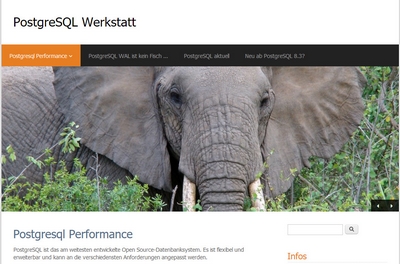Neues vom PostgreSQL Planet
Dan Langille: PostgreSQL: MD5 password support is deprecated – updating the user passwords
Eight years ago, PostgreSQL introduced scram-sha-256 hashes for passwords.
Eleven months ago, MD5 was deprecated.
Yesterday, I got caught up with all this.
Some of this post will deal with how I fixed it, but mostly it is documenting (for myself) what I did. The fix covers several services and takes place over multiple days.
First, some background on why this change has come into focus for me.
Frederic Delacourt: Did you know? Tables in PostgreSQL are limited to 1,600 columns
Did you know a table can have no more than 1,600 columns? This blog article was inspired by a conversation Pierre Ducroquet and I had.
First, the documentationThe PostgreSQL documentation Appendix K states a table can have a maximum of 1,600 columns.
Kaarel Moppel: Postgres, Kafka and event queues
Dave Stokes: Loading The Titanic Dataset Into PostgreSQL With DBeaver Part 3
In the previous post, we asked AI to make recommendations to help clean up the data loaded directly from a CSV file. The initial data load for the Name failed because a VARCHAR(64) was estimated to be insufficient to hold the data. But it was not, and a TEXT field was used instead.
So now we want to save some disk space!
Francesco Tisiot: Introducing Developer Tier for Aiven for PostgreSQL® services
Starting at $8 USD, the new Developer tier includes everything from the Free tier, with extra disk space, preserved uptime for idle services, and Basic support to keep you building without interruption.
Laurenz Albe: The bastard DBA from hell
© Laurenz Albe 2025
Hubert 'depesz' Lubaczewski: Waiting for PostgreSQL 19 – Sequence synchronization in logical replication.
Hans-Juergen Schoenig: PostgreSQL 18: More performance with index skip scans
PostgreSQL 18 brings a couple of performance related features to the table which will help applications to run more efficiently, providing a better and more enjoyable user experience. One of those performance features is called “skip scans”. Most of you might ask yourself at this point: Wow, sounds cool, but what is a skip scan? The purpose of this post is to shed some light and explain how this works, what it does and most importantly: How one can benefit from this feature in real life.
Peter Eisentraut: Waiting for SQL:202y: GROUP BY ALL
Making GROUP BY a bit easier to use is in my experience among the top three requested features in SQL.
Like, if you do
CREATE TABLE t1 (a int, b int, ...); SELECT a, avg(b) FROM t1 GROUP BY a;the column list in the GROUP BY clause doesn’t convey much information. Of course you wanted to group by a, there is no other reasonable alternative. You can’t not group by a because that would be an error, and you can’t group by things besides a, because there is nothing else in the select list other than the aggregate.
Nikolay Samokhvalov: #PostgresMarathon 2-013: Why keep your index set lean
Your API is slowing down. You check your database and find 42 indexes on your users table. Which ones can you safely drop? How much performance are they costing you? Let's look at what actually happens in Postgres when you have too many indexes.
If you're a backend or full-stack engineer, you probably don't want to become an indexing expert — you just want your API fast and stable, without babysitting pg_stat_user_indexes.
Ian Barwick: PgPedia Week, 2025-11-09
This quarter's round of minor releases are expected later this week. Note this will be the last minor release for PostgreSQL 13 .
Cornelia Biacsics: Contributions for week 45, 2025
New podcast episode published by Claire Giordano from her series “Talking Postgres” : Building a dev experience for Postgres in VS Code with Rob Emanuele
Blog posts
Ian Barwick: PgPedia Week, 2025-11-02
Elizabeth Garrett Christensen: Postgres Internals Hiding in Plain Sight
Postgres has an awesome amount of data collected in its own internal tables. Postgres hackers know all about this - but software developers and folks working with day to day Postgres tasks often miss out the good stuff.
The Postgres catalog is how Postgres keeps track of itself. Of course, Postgres would do this in a relational database with its own schema. Throughout the years several nice features have been added to the internal tables like psql tools and views that make navigating Postgres’ internal tables even easier.
Jimmy Angelakos: pg_statviz 0.8 released with PostgreSQL 18 support
I'm happy to announce release 0.8 of pg_statviz, the minimalist extension and utility pair for time series analysis and visualization of PostgreSQL internal statistics.
This release adds support for PostgreSQL 18, adapting to significant catalog view changes introduced in this release:
Jobin Augustine: PostgreSQL 13 Is Reaching End of Life. The Time to Upgrade is Now!
Paul Ramsey: PostGIS Performance: Improve Bounding Boxes with Decompose and Subdivide
In the third installment of the PostGIS Performance series, I wanted to talk about performance around bounding boxes.
Geometry data is different from most column types you find in a relational database. The objects in a geometry column can be wildly different in the amount of the data domain they cover, and the amount of physical size they take up on disk.

